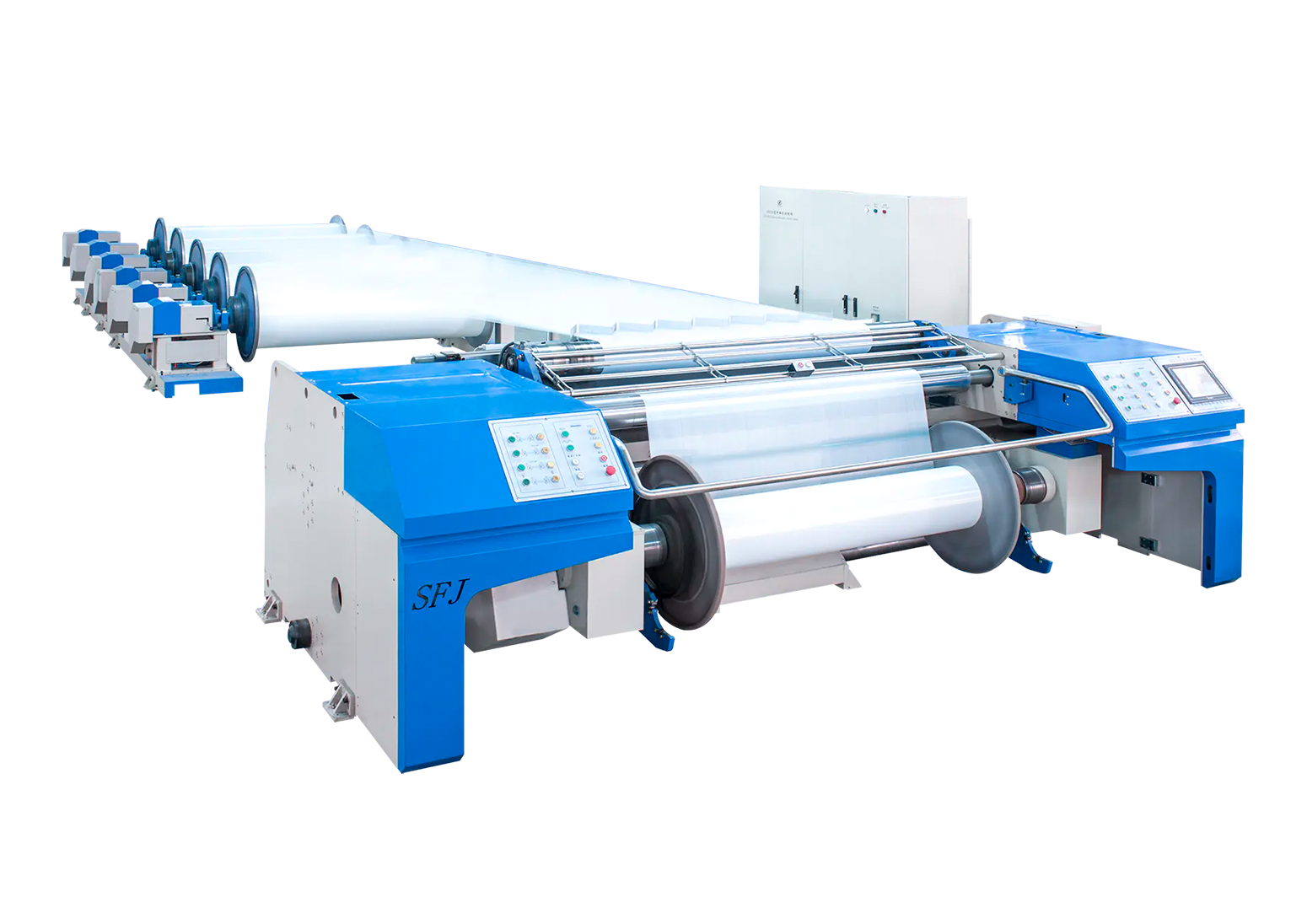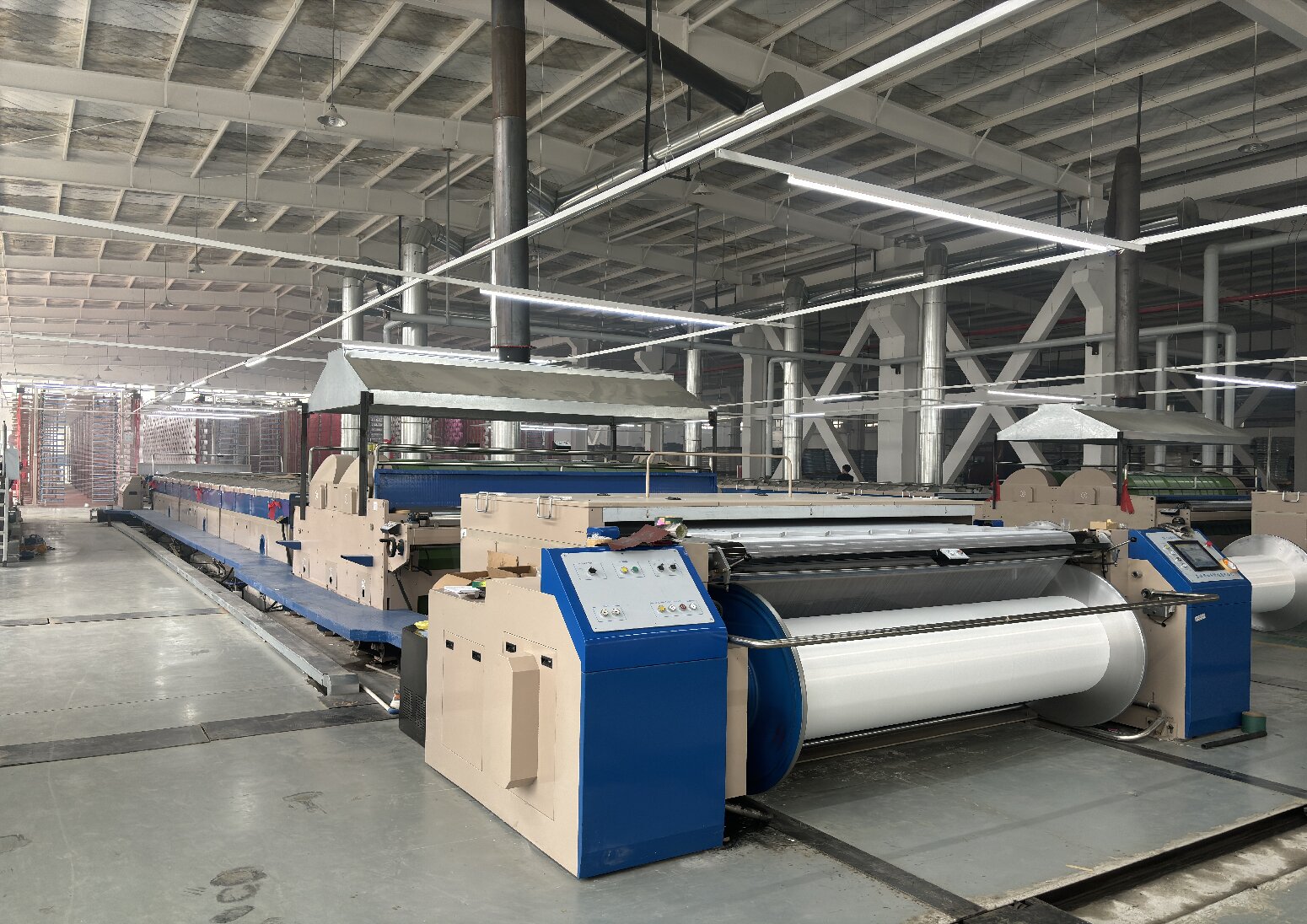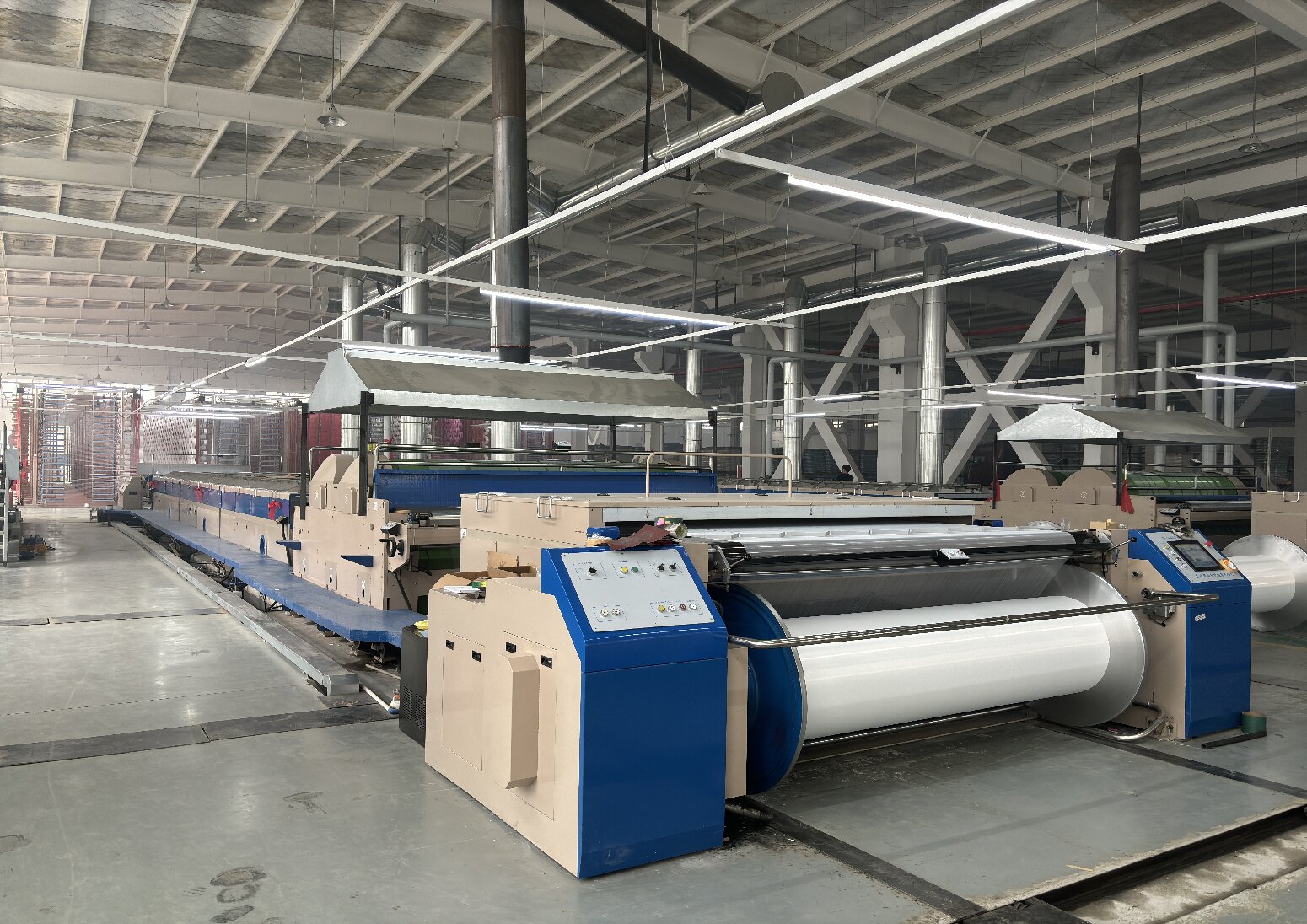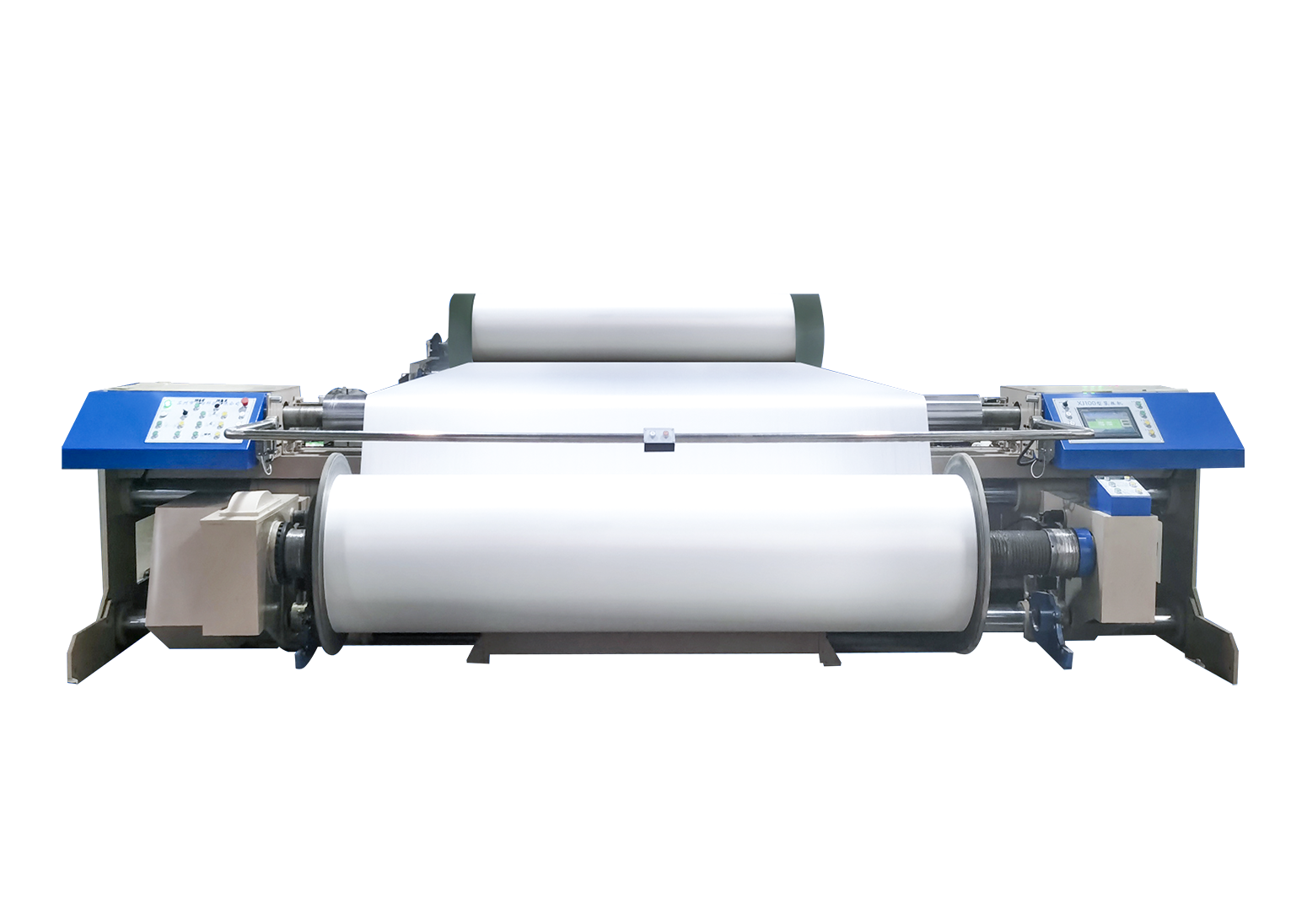What are the key types and functions of weaving preparation equipment in the textile industry?
1. Warping Machines: Warping machines are used to create a warp beam, which is a collection of parallel yarns wound onto a cylindrical beam. These machines facilitate the precise and uniform winding of multiple yarns onto the warp beam, ensuring the even distribution of yarns across the width of the fabric. Warping machines can handle different types of yarns, adjust tension, and control the length and density of the warp.
2. Sizing Machines: Sizing machines, also known as warp-sizing machines or slasher machines, are used to apply sizing agents onto the warp yarns. Sizing agents, such as starches or synthetic compounds, are applied to improve the yarn's strength, reduce friction during weaving, and enhance the fabric's appearance. Sizing machines evenly distribute the sizing agent onto the warp yarns, ensuring proper adhesion and consistency.
3. Drawing-in Machines: Drawing-in machines automate the process of threading the warp yarns through the weaving loom's harnesses and reed. They reduce the manual labor involved in drawing-in, which can be time-consuming and tedious. Drawing-in machines ensure accurate positioning of the warp yarns, minimize threading errors, and improve overall efficiency.
4. Sectional Warping Machines: Sectional warping machines are used for high-volume production and complex weaving patterns. They allow the warp beam to be divided into sections, with each section containing a different set of yarns or pattern repeats. This facilitates the production of intricate designs and simplifies the weaving process for multi-colored or patterned fabrics.
5. Bobbin Winders: Bobbin winders are used to wind yarn onto bobbins or pirns, which are then used in the weft insertion process. Bobbin winders ensure consistent winding tension, even thread distribution, and proper package formation. They can accommodate different yarn types, sizes, and winding speeds, enabling efficient and reliable weft supply during weaving.
6. Lease Reed Machines: Lease reed machines assist in the proper alignment and separation of the warp yarns. They create evenly spaced divisions in the warp yarns, called "leases," which ensure that each yarn follows its designated path during weaving. Lease reed machines increase the efficiency of the weaving process, reduce yarn breakages, and contribute to the production of uniform and fault-free fabrics.
7. Warp Inspection Machines: Warp inspection machines are utilized to detect and eliminate defects or faults in the warp yarns before they are woven. These machines use sensors or cameras to identify yarn irregularities, such as broken or contaminated yarns. By detecting and removing defective yarns, warp inspection machines help maintain the quality and integrity of the woven fabric.
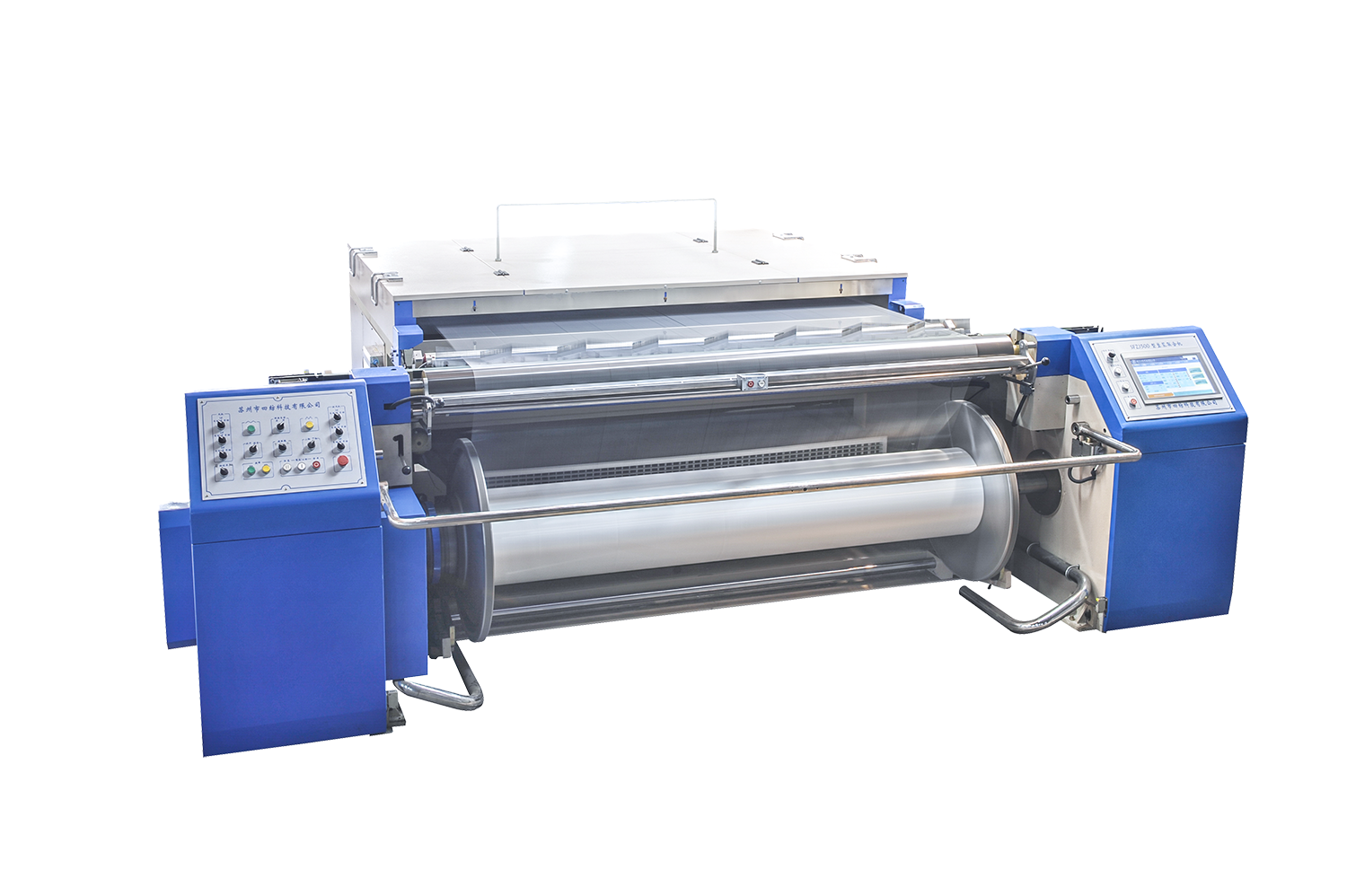
2. Sizing Machines: Sizing machines, also known as warp-sizing machines or slasher machines, are used to apply sizing agents onto the warp yarns. Sizing agents, such as starches or synthetic compounds, are applied to improve the yarn's strength, reduce friction during weaving, and enhance the fabric's appearance. Sizing machines evenly distribute the sizing agent onto the warp yarns, ensuring proper adhesion and consistency.
3. Drawing-in Machines: Drawing-in machines automate the process of threading the warp yarns through the weaving loom's harnesses and reed. They reduce the manual labor involved in drawing-in, which can be time-consuming and tedious. Drawing-in machines ensure accurate positioning of the warp yarns, minimize threading errors, and improve overall efficiency.
4. Sectional Warping Machines: Sectional warping machines are used for high-volume production and complex weaving patterns. They allow the warp beam to be divided into sections, with each section containing a different set of yarns or pattern repeats. This facilitates the production of intricate designs and simplifies the weaving process for multi-colored or patterned fabrics.
5. Bobbin Winders: Bobbin winders are used to wind yarn onto bobbins or pirns, which are then used in the weft insertion process. Bobbin winders ensure consistent winding tension, even thread distribution, and proper package formation. They can accommodate different yarn types, sizes, and winding speeds, enabling efficient and reliable weft supply during weaving.
6. Lease Reed Machines: Lease reed machines assist in the proper alignment and separation of the warp yarns. They create evenly spaced divisions in the warp yarns, called "leases," which ensure that each yarn follows its designated path during weaving. Lease reed machines increase the efficiency of the weaving process, reduce yarn breakages, and contribute to the production of uniform and fault-free fabrics.
7. Warp Inspection Machines: Warp inspection machines are utilized to detect and eliminate defects or faults in the warp yarns before they are woven. These machines use sensors or cameras to identify yarn irregularities, such as broken or contaminated yarns. By detecting and removing defective yarns, warp inspection machines help maintain the quality and integrity of the woven fabric.




 中文简体
中文简体